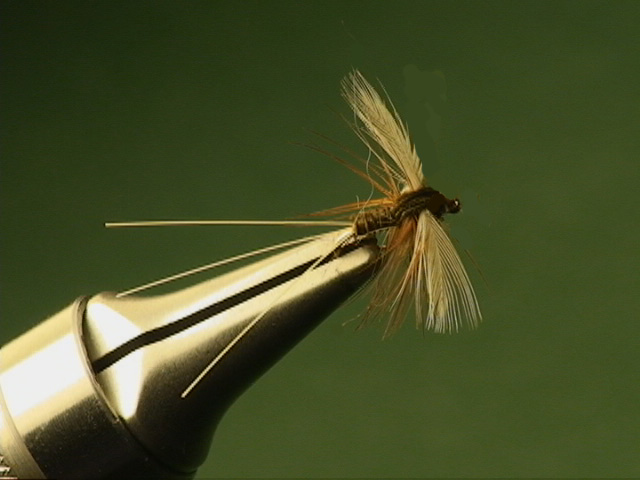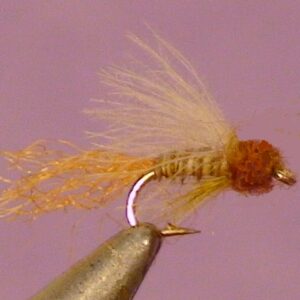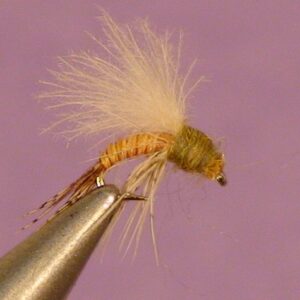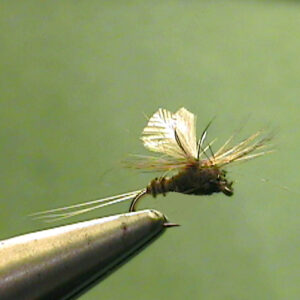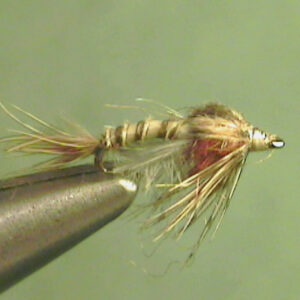spinner fall can occur in the early mornings, it usually happens late in the
afternoons just before dark. They have a reddish brown body color with
transparent wings. The spinner fall may occur very late in the day, if the hatch
occurs late or near the end of the Blue Quill hatch period of time. Most of the time
it will take place in the late afternoons or early mornings-sometimes, both.Spinner Presentation:
The mayflies will mate and the female Blue Quills will deposit their eggs in the
same type of water that they hatch in. This is the slower moving water that is
near fast water. This can be the edges of the banks, the tail outs of pools and
riffles and the ends of long runs.
After the females die, they will become spent on the surface. The males will too if
they happen to fall on the water. Most often the spinners will be caught up in the
faster water and carried downstream to collect into calm pockets of water, eddies
and along the outer edges of current seams.
A down and across presentation or direct downstream slack cast may be
needed, especially if the water is very smooth. It depends on the water that they
are trapped in.We have had some excellent success fishing the spinner fall during the
late afternoons. We do better if it is late in the duration of the Blue Quill hatch
when the weather is usually warmer and it is very overcast or rainy. We have on
a few occasions found the trout feeding on the spent spinners in very calm,
shallow water in the early morning. Sometimes the Quill Gordon spinners will be
mixed in with them. Blue-winged olives and Little Blue-winged Olive spinners may
also be present. This takes a light, long leader and tippet and a careful
presentation. Most anglers haven’t started to fish this early in the morning. If you
happen to go early in the morning during a hatch, check the water for them.
Often they can be spotted along the edge of the water right against the banks.
You almost need to get down on your knees to see them. Since spinners float
spent, flush with the surface, there is nothing protruding above the water to help
spot them.
Summary:
The early season Blue Quill hatch can be even more important than the Quill
Gordons that start hatching about the same time of the season. That’s
because it usually last much longer and there are usually a lot more of them than
they are Quill Gordons. On very overcast or rainy days the hatch is usually more
intense. They may be mixed in with the Blue-winged olives. Since they are about
the same size of some of the baetis species, the same fly may work for both,
even though the Blue Quills are much darker in color. This hatch is not real easy
to fish because of the calm location of the water they hatch in. You can’t just toss
an imitation upstream into the fast runs and count on catching trout. You may be
successful a few times but usually success demands more thoughtful
presentations.
Copyright James Marsh 2013
